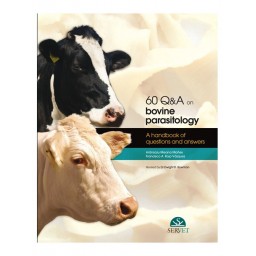The number of new technology vaccines available has been increased worldwide, as well as their widespread use in the poultry industry, especially at hatchery level. Therefore, an updated review with practical and visual approach has been developed in order to highlight the importance of hatchery vaccination in poultry farming, whatever the vaccination technique used (in ovo, subcutaneous or spray vaccination), to control the main diseases affecting this species (infectious bursal disease, Newcastle disease, infectious laryngotracheitis, etc.). This handbook has been written by an expert with wide experience in this field. Numerous graphic resources have been included to complement the information provided and make the contents more understandable and accessible to readers.
Authors:
MOHAMED FAIZAL ABDUL-CAREEM
Assistant Professor (virology) at the University of Calgary (Canada) since 2010. He is diplomate of American College of Poultry Veterinarians (ACPV) and American College of Veterinary Microbiologists (ACVM).
Key Features:
➜ Written by an expert with a wide experience in this field.
➜ Numerous graphic resources included.
➜ Small and easy-to-handle format.
Table of Contents:
1. Introduction
General definition
History
Economic significance
2. Development of immune system
General overview
Innate immune system development
Development of innate immune functions
Cell-mediated immune system development
Development of cell-mediated immune functions
Antibody-mediated immune system development
Development of antibody-mediated immune
functions
Gut-associated lymphoid tissue (GALT)
development
Development of adaptive immune responses in
GALT
3. Immune responses to hatchery
vaccination
General overview
Innate immune responses
Adaptive immune responses
Cell-mediated immune responses
Antibody-mediated immune responses
4. Hatchery vaccination
Overview
Differences between hatchery and field
vaccination
Current trends of hatchery vaccination practices
Practice of in ovo vaccination by broiler chicken
industry
5. Hatchery vaccines
Currently available hatchery vaccines
Attributes of acceptable hatchery vaccines
Safety
Compatibility among hatchery vaccines
Ability to withstand maternal antibody
interferences
Ability to induce innate responses
Persistence of vaccine antigens
Ability to induce adaptive responses
and protection
6. Hatchery vaccination techniques
In ovo vaccination
In ovo vaccination leads to induction of mucosal
immune responses
Currently available in ovo vaccines
Vectored vaccines
Hatchery spray vaccination
Currently available spray hatchery vaccines
Hatchery subcutaneous vaccination
7. Management of hatchery
vaccination
Practices during pre-vaccination period
Practices during post-vaccination period
8. Advantages of hatchery vaccination
9. Limitations of hatchery vaccination
10. References















